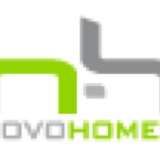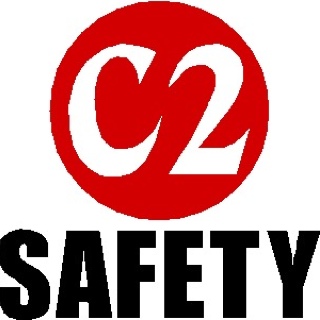Information
-
Document No.
-
Audit Title
-
Client / Site
-
Conducted on
-
Prepared by
-
Location
-
Personnel
1) EHS Management Systems
-
Pre Job Briefings are completed
-
All visitors are required to review and sign before entering work zone
-
JHA's completed, documented in use
-
Workers are familiar with JHA
-
Applicable Permits are posted
-
Procedures being followed(i.e. LOTO, Confined Space, Lead, Asbestos, mold, insulation etc)
-
First Aid, BBP kits, fire extinguishers, eye wash stations set onsite reality accessible-workers know location
2) Housekeeping
-
Project work areas are kept uncluttered
-
All pathways are clear of slip/trip fall hazards if possible or have been identified
-
Proper storage of all materials, equipment and tools
-
Electrical cords, hoses, welding leads routed to prevent trip/bump hazards
-
All scrap material disposed of properly
-
Trash receptacles are provided for work areas and emptied regularly
-
Barricades are installed as required
-
Rebar Caps or other impalement protection provided
-
Oily rags / wastes disposed of or stored as required
-
Storage rooms / areas are kept orderly and neat
-
Lighting is provided to meet requirements for safe work
-
Drinking water / restrooms are available for employees
3) Personal Protective Equipment (PPE)
-
All PPE identified on JHA is in use as required
-
All PPE is inspected as required
-
All PPE is in good, safe condition
4) Fall Protection
-
Fall protection plan has been completed
-
Fall protection plan requirements are in use
-
All PFAS (Personal Fall Arrest System) has been inspected and in use as required
5) Trenching and Excavations
-
Competent person is onsite and completes daily inspection / classifies soil / supervises protection systems
-
> 4' ladder in place 3' over the edge
-
>5' wall stabilization, sloping, benching, shoring or shielding
-
>6' add fall protection
-
Access and egress provided every 25'
-
Spoils kept at least 2' from edge of trench
6) Scaffolds and Ladders
-
Competent person for the scaffolding on site
-
All workers trained for use
-
Proper access and egress provided
-
Scaffold Plan complete
-
Scaffolds inspected and tagged correctly
-
Scaffolds > 10' fall protection is in place
-
All ladders have been inspected before use
-
Proper ladder for the job in use properly
-
Extension ladders extend at least 3' above landing
-
Extension ladders are used as required
-
Fixed ladder access platforms are guarded
-
Step ladders are used properly
-
Ladders not in use are properly stored
6a) Aerial man lifts / scissor lifts
-
All equipment has been inspected before use
-
Workers have been trained to operate lift
-
PFAS in use where required
-
Good housekeeping maintained on lifts
7) Hoisting and Lifting Equipment
-
Lift Plan has been completed as needed
-
All equipment is inspected by a competent worker for safe operation
-
All equipment has been set up as required to ensure safe operation
-
Crane operator has required license for crane in use
-
Trained signal man is identified and trained rigger in use
-
Plastic sheeting has been placed under the crane
8) Vehicles / Operated Equipment
-
Daily inspections have been completed
-
Good housekeeping maintained on and in the equipment
-
Spill Kit OnBoard
-
Operator License or certifications as required
9) Fire Protection
-
Fire extinguishers properly located, fully charged and inspected
-
Hot Work Permit is in use as required
-
Fire watch in place as required
-
Flammables and combustibles properly stored
-
Oxygen and acetylene cylinders separated by at least 20' or barrier/divider when in storage
-
Containers properly labeled as to their contents
-
Compressed gas cylinders properly maintained and stored
-
UL / DOT approved safety cans with flash arrestors / screens are used for flammable liquids
-
Walk / passage ways beneath hot work operations are barricaded with appropriate signage
-
Firefighting hoses in good condition and not used for other purposes
-
Smoking is only permitted outside fire hazard areas
10) Tools and Equipment
-
All hand tools are inspected before use
-
Hand tools are properly carried and used
-
Hand tools are in good safe condition
-
Hand tools are stored properly
-
All air and water lines, connectors, working parts are inspected before use
-
Rotating plant equipment is properly guarded
-
All hand and mounted tools are properly guarded
-
Proper adjustment on work rest and wheels properly dressed on bench grinders
-
Grindr RPM rating is less than disk/stone
-
Tools are used for the job in accordance with manufacturer
-
No modified or fabricated tools are in use without proper authorization
-
Dropped objects prevention program is in place
-
Power cords and plugs on the tools are as required for safe use
11) Electrical
-
All drop cords are in safe working condition
-
Electrical tools, cords, light stringers are in safe condition with current safety inspection<br>
-
GFCI in use as required<br>
-
Electrical panels are labeled as required<br>
-
"DANGER - High Voltage" signage is on all installations of 600V or more
-
Motors are in safe condition<br>
-
Insulated tools are used as required
-
Breakers / switch panel doors are closed and knockouts covered
-
Receptacles are not overloaded
-
LOTO and electrical work permits in use as required
12) Exits & Evacuation
-
All exits are clearly marked and lit
-
Exit doors are unlocked
-
Exit passages are free of flammable and combustible materials<br>
-
Emergency lighting words and is tested monthly and test documented
-
Evacuation Plan is in place and affected employees know their roles<br>
-
Drills are conducted to test the effectiveness of the plan
-
Evacuation routes and assembly areas are marked
13) Water Quality
-
Storm water permits and controls in place<br>
-
SPCC Plan documented and implemented<br>
-
Storm drains have been identified and plans in place to prevent spills<br>
14) Air Quality
-
All applicable permits in place<br>
-
All sources identified
15) Hazardous Waste
-
Proper labeling in place
-
Proper handling, storage, disposal and/or shipping of waste
-
Proper recycling program established
16) Hazardous Chemicals
-
M(SDS) are accessible to workers
-
Chemicals properly stored
-
Required labels in use
-
Regulatory-required reporting completed<br>
17) Work Zone
-
Proper work zone established
-
Reflective traffic vests worn by workers
-
Proper signage erected<br>
-
Workers appropriately trained
18) Hazard Evaluation
-
Appropriate surveys performed to identify possible utilities pro to penetrating walls, ceilings, floors and/or ground<br>
-
Other workers in the vicinity have been notified of hazards that may affect them<br>
Environmental
-
Bodies of water are protected; silt fences in place if required<br>
-
Protected plants and animals identified- no contact by workers
-
Spill kits locations identified; workers know what to do if a hazardous spill occurs
-
Contractor Representative :
-
Contractor Representative Signature













